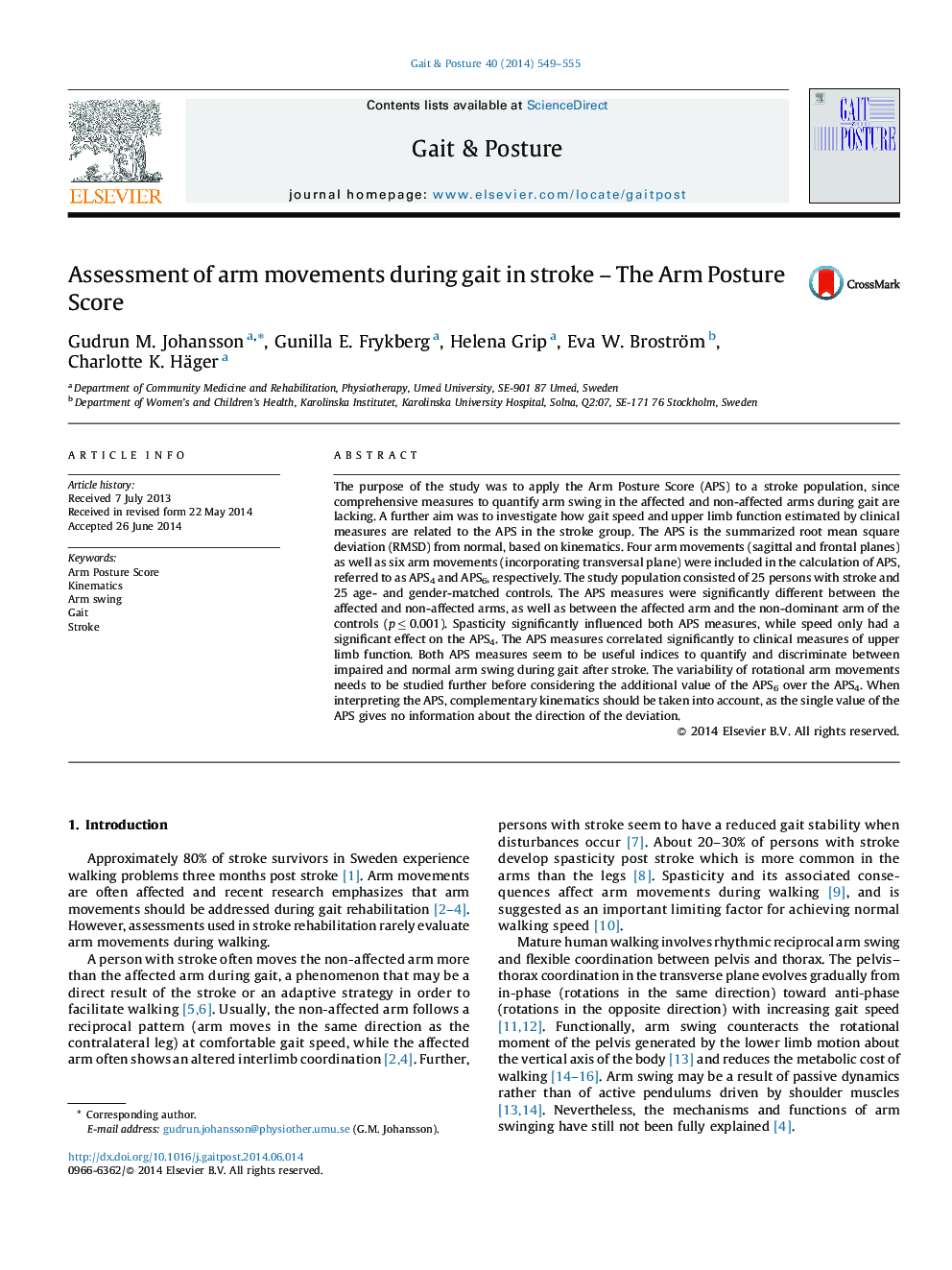| Article ID | Journal | Published Year | Pages | File Type |
|---|---|---|---|---|
| 6205924 | Gait & Posture | 2014 | 7 Pages |
â¢The Arm Posture Score (APS) is a comprehensive index to quantify arm swing in gait.â¢We applied the APS to persons with stroke and age- and gender-matched controls.â¢The APS captured pathological arm swing of the affected arm in the stroke group.â¢APS measures, with and without rotational components, are useful indices in stroke.â¢Complementary kinematics are needed when interpreting the single value of the APS.
The purpose of the study was to apply the Arm Posture Score (APS) to a stroke population, since comprehensive measures to quantify arm swing in the affected and non-affected arms during gait are lacking. A further aim was to investigate how gait speed and upper limb function estimated by clinical measures are related to the APS in the stroke group. The APS is the summarized root mean square deviation (RMSD) from normal, based on kinematics. Four arm movements (sagittal and frontal planes) as well as six arm movements (incorporating transversal plane) were included in the calculation of APS, referred to as APS4 and APS6, respectively. The study population consisted of 25 persons with stroke and 25 age- and gender-matched controls. The APS measures were significantly different between the affected and non-affected arms, as well as between the affected arm and the non-dominant arm of the controls (p â¤Â 0.001). Spasticity significantly influenced both APS measures, while speed only had a significant effect on the APS4. The APS measures correlated significantly to clinical measures of upper limb function. Both APS measures seem to be useful indices to quantify and discriminate between impaired and normal arm swing during gait after stroke. The variability of rotational arm movements needs to be studied further before considering the additional value of the APS6 over the APS4. When interpreting the APS, complementary kinematics should be taken into account, as the single value of the APS gives no information about the direction of the deviation.
